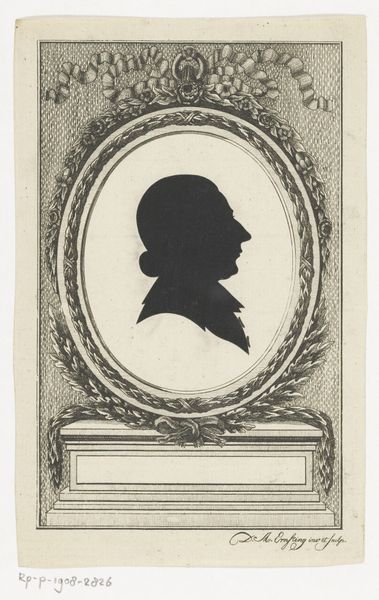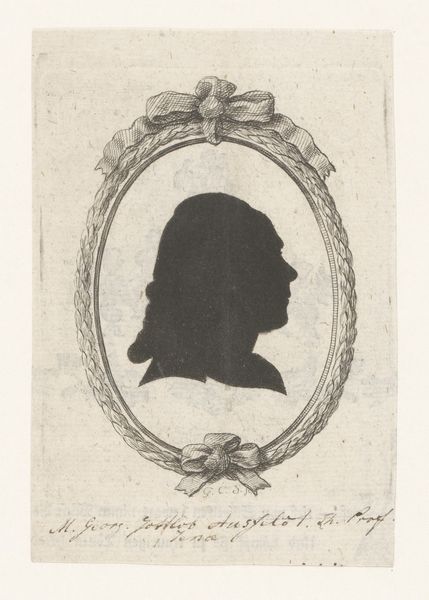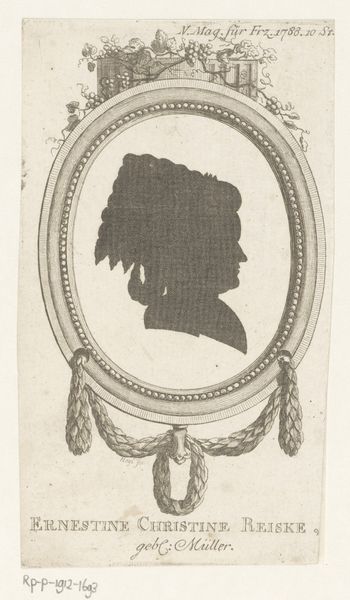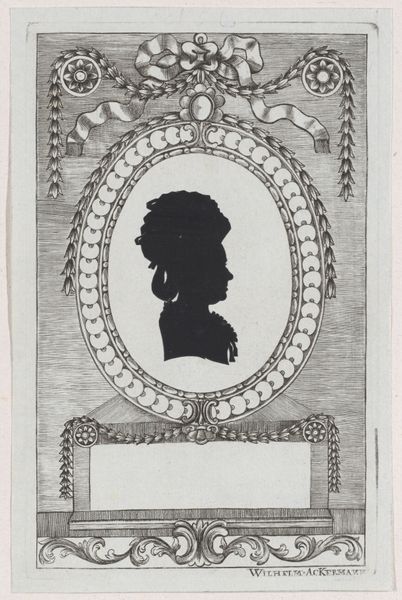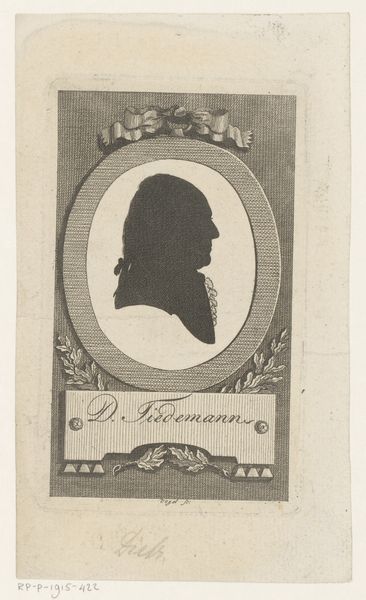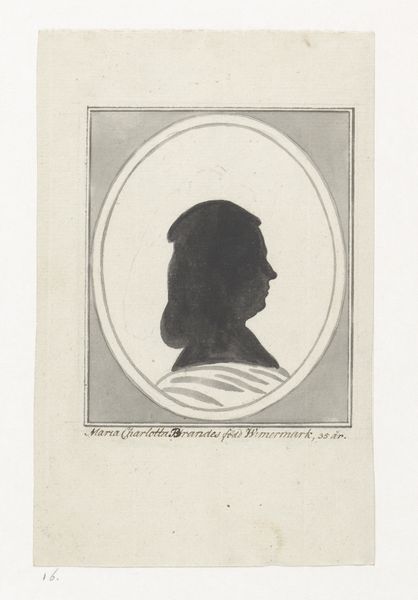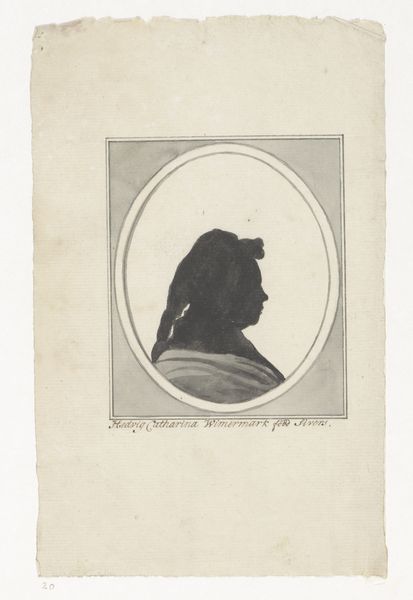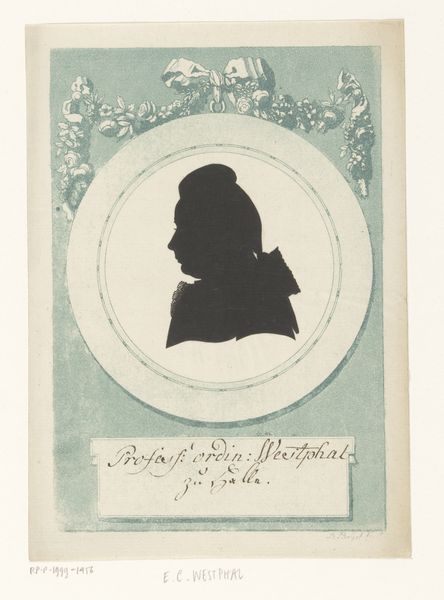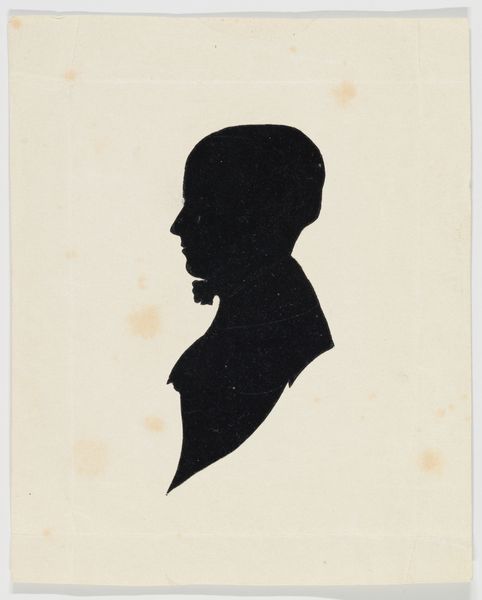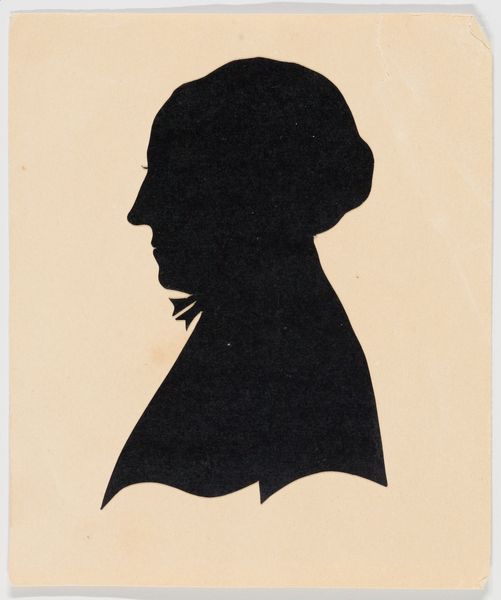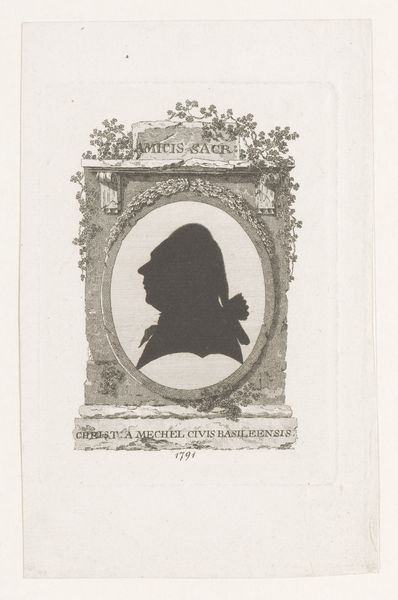
Dimensions: height 160 mm, width 104 mm
Copyright: Rijks Museum: Open Domain
Curator: Here we have "Silhouetportret van Vogt, predikant in Bremen," or Silhouette Portrait of Vogt, a Preacher in Bremen, created in 1787 by F.G.F. Brennecke. It's a pencil drawing. What are your initial thoughts? Editor: Stark, yet delicate. The sharp contrast of the silhouette is softened by the ornate frame. I wonder about the labour involved in creating this detailed surround by hand? Curator: Silhouette portraits were incredibly popular during the late 18th century. Before photography became widespread, they were a relatively inexpensive way for people to have their likeness captured. Brennecke cleverly merges utility with the burgeoning Romantic style of the era, creating a powerful image. Editor: Precisely, and think about the process. Reducing a person to their outline! It emphasizes form over substance, yet here Vogt's profession is highlighted. Also consider the role of paper, the pencil. Each contributing their own history to the final object and social use as record and memory of one's social existence. Curator: Vogt, as a preacher, occupied a significant position of social influence. Portraiture, even in silhouette form, served as a visual marker of status, reinforcing the established hierarchy. Displaying images of leaders helped further entrench ideas about cultural, political or spiritual identity. Editor: That is why the frame, rendered with meticulous strokes of a graphite pencil, elevates the simple silhouette. The artist's hand is apparent. Were these commonly framed afterwards or displayed as is, I wonder. How much did labour cost for a clergyman to obtain a silhouette, for instance? Curator: These were frequently framed and displayed within the home as signs of respectability. The fact that this drawing has survived suggests Vogt remained an important public figure beyond his lifetime, and tells us of the societal values that upheld it. Editor: Indeed. When we engage with this image, we're engaging with a nexus of social meaning embedded in a physical object, from Vogt's status to Brennecke’s craft. Curator: It offers an interesting glimpse into the socio-political role of portraiture, even in its most minimal form. Editor: And that pencil line – a beautiful testament to skill, access, and representation.
Comments
No comments
Be the first to comment and join the conversation on the ultimate creative platform.
